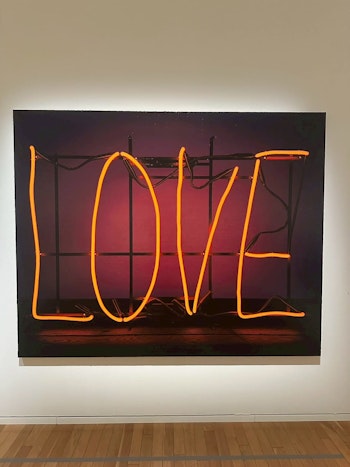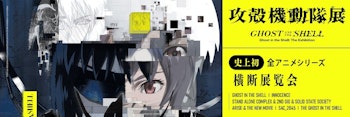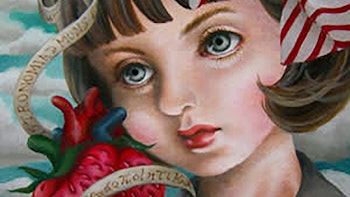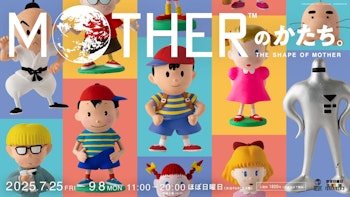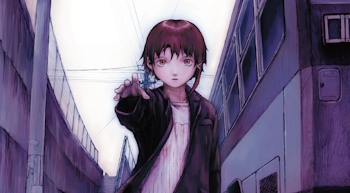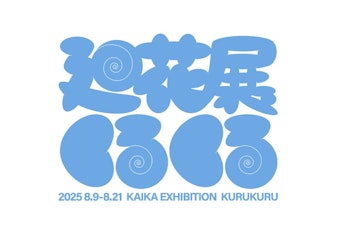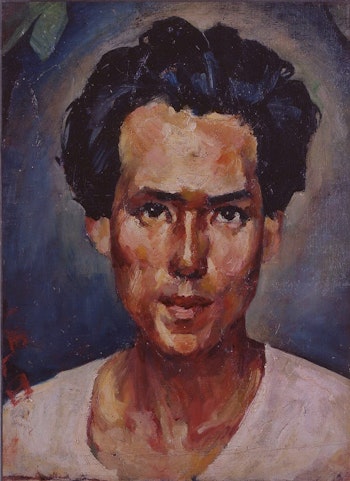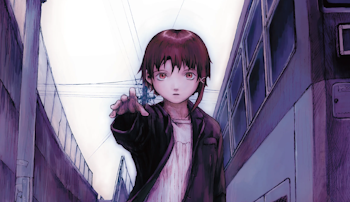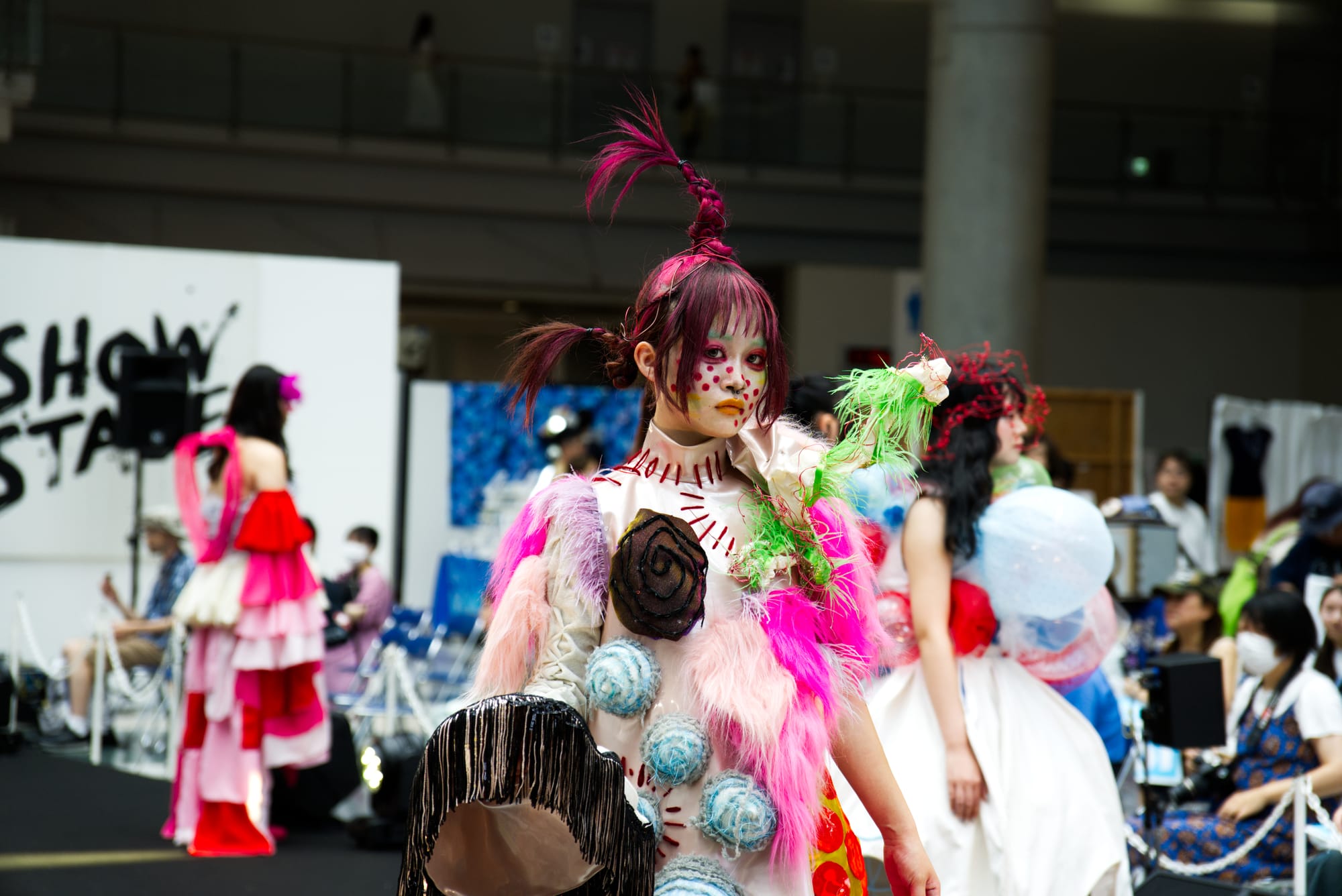
It’s easier than Tokyo than many other major cities to discover new artists, both large and small. Want to explore art history? There’s plenty of art museums to gaze upon to your heart’s content. Contemporary artists? Plenty of galleries. Many train stations even have some small spots for art displays. Then there are events and markets for artists and designers and crafters to gather, showcase and sell their work to the general public that attract the masses, and of those, few are bigger than Design Festa.
The event began in 1994 in a small apartment complex in Harajuku and has since grown to an event with thousands of artists strong taking over vast swathes of Tokyo Big Sight in Odaiba on a twice-yearly occasion, and whose latest rendition welcomed over 6,500 artists to participate and showcase their work. It’s not just the biggest event in Japan, it’s the biggest such event in Asia. Beyond that, the organization behind the event also operates the Design Festa Gallery, a space more in line with that original vision but which is open year-round, with artists able to rent space to sell their work to the public.
“Design Festa has always been about creating a space for creators to express their work,” noted senior event organizer Ayaka Yamanone when we spoke shortly prior to Design Festa earlier this month. Since the beginning, this was a show centered in the roots of the arts and fashion scene in Harajuku in the 1990s. It became a word-of-mouth success with flyers being handed out to spread awareness of a showcase that only grows more ambitious with each edition of the event.
“When the first event took place [back in 1994] it was basically held across various rooms in an apartment building with different exhibitions and eventually grew from there, leading to the large event we have now at Tokyo Big Sight.”
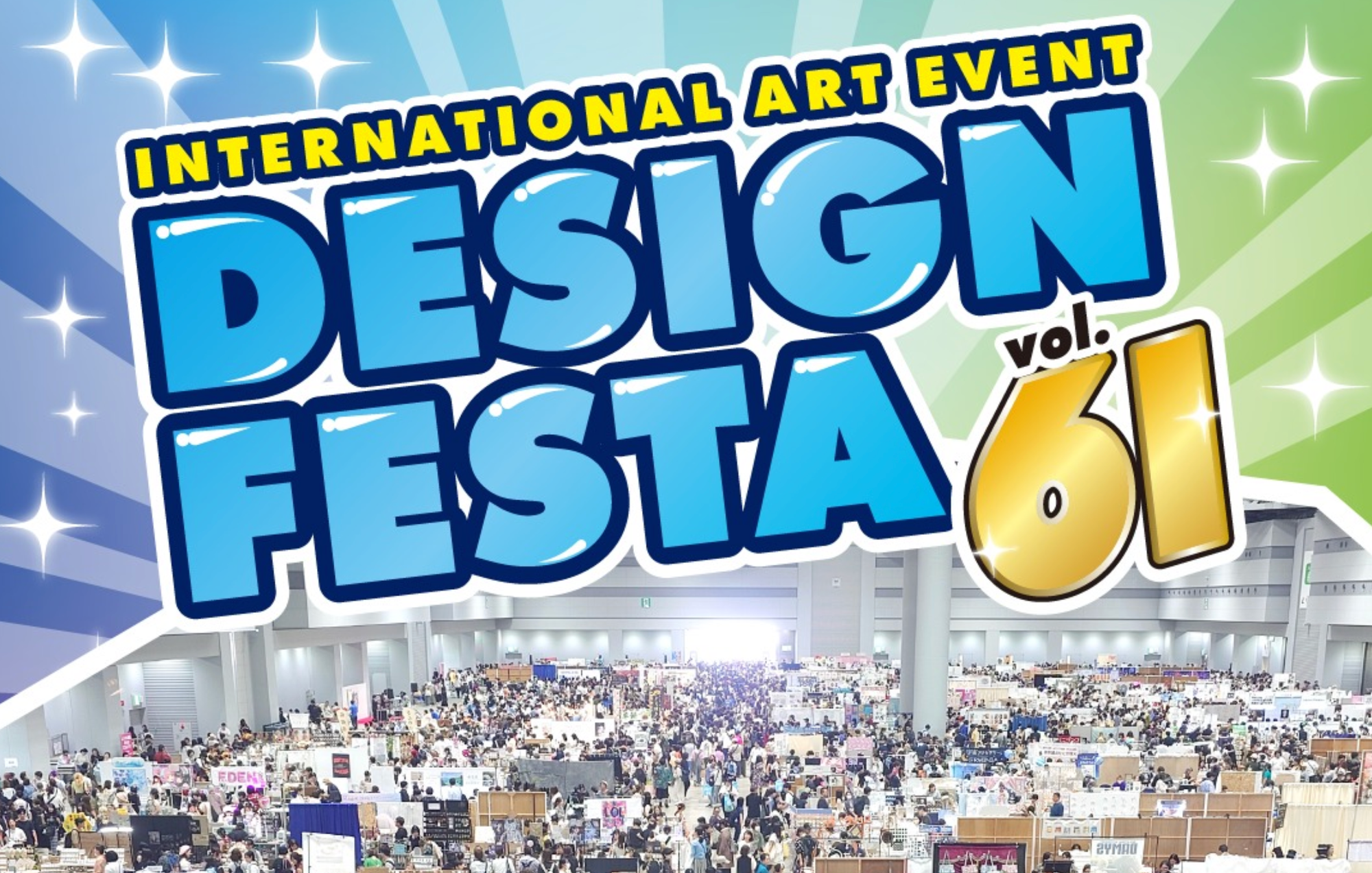
Yet as the event has grown, what remains unique about Design Festa is that it retains an almost-chaotic and grounded energy in touch with these humble origins. Typically, as events scale, they become forced to generalize, or to narrow their scope, yet there’s something thrilling about wandering and seeing just how much variety there is in the offerings between each and every stall, and just how much there is to see around the show floor.
It’s not easy catering for everyone when you have fashion designers, illustrators, model kit makers, photographers and so much more under one roof. “With more people attending and both participants and attendees wanting more and different things it can be difficult,” Yamanone admitted. “That being said we want as many people to participate as possible and we want to do what we can to support these varying groups and make sure everyone can enjoy that experience. What helps in all that is that even as we’ve grown we’ve tried to make sure our stance has never changed of supporting artists who create original works and providing a space where they can exhibit and have their works noticed and actively engaged with by everyone there in the space.”
Tokyo has its fair share of markets for artists to showcase their creations, from fan events like Comiket to those centered on original creations in both crafts and visual arts like Handmade, Comitia and many more. What makes Design Festa stand out is its scale and variety that allows anyone to showcase, a place where you can see handmade jewelry and baked goods in one convention hall, a stage with fashion shows in another, live painting in another, and workshops in yet another. Everyone of all fields is here, with an authenticity that manifests in the work, their style, and their energy.
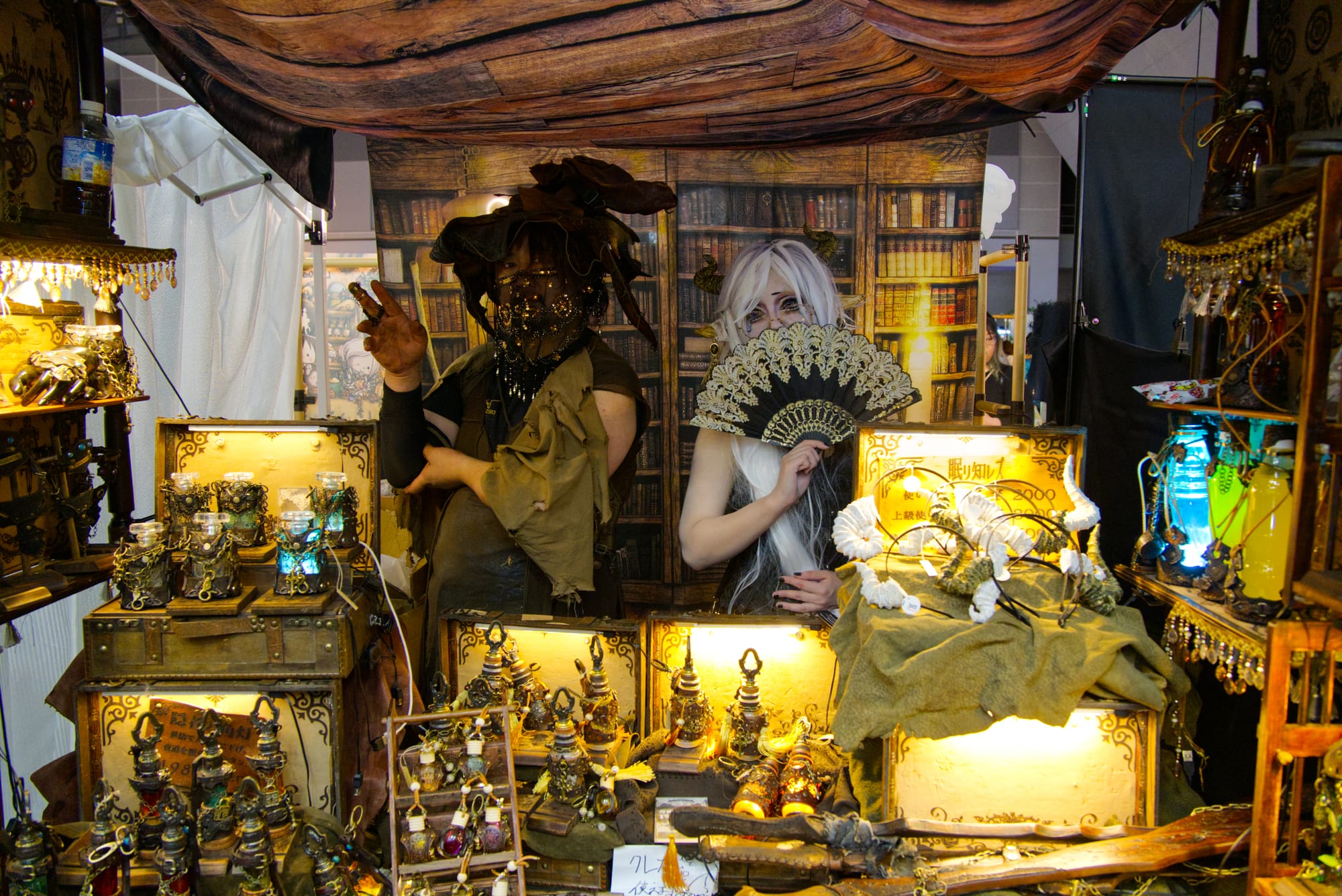
“We don’t want to discriminate against one genre if its something someone is passionate for,” in summary. “With things like the One Coin Runway" - a showcase allowing anyone, exhibitor or otherwise, to pay 500 yen to walk a runway and showcase their outfit or creations to anyone watching, giving space to artists, fursuits, armor, streetwear and more - “I feel it’s something you don’t really see at any other event, it’s a chance to allow anyone motivated a way to share their work with others, even people who just come to see the event can join in if they have something to show, walk the runway and appeal to the crowd. When we first introduced that it was with this in mind, but everything is about celebrating artists in ways you don’t really see at other events, whether that’s in the space offered or live painting walls where artists can paint for an audience in real time to create a huge piece of art over two days, things like that.
“[With Design Festa] we support everyone by showcasing their work in a way you can’t anywhere else.”
Attending these events over my time in Tokyo, what’s exciting about these shows is that there’s always something new to discover at each event. It’s not as though the event was an unfamiliar entity to me as I followed up that conversation by trudging through Tokyo in the early-morning weekend rush to attend the show for my third time, but I was excited what I would find on this latest trip. Held in the West and South halls of Big Sight, a space defined by the tall roof of the central commons which hosts a special stage for performances across the two-day event with branching hallways on all sides, as the doors open there’s an initial rush as thousands of excited people trundle through the doors in order to see everything there is to discover.
The halls themselves are separated by category to allow for a semblence of organization amidst such an array of booths, but that doesn’t mean there’s no surprise to be found when stumbling down every aisle. The fourth floor of the West Hall, for example, is split into five categories: a live-paintin area, a somewhat free-for-all all genres exhibition of miniature crafts, a doll craft space, interior decoration, and a designated low-light area. In the low-light area, the lights for the hall are intentionally turned off, allowing those selling glow-in-the-dark crafts, low-light objects, or merely wishing to showcase something suited to the night (which can range from elven fantasy weaponry to DJs playing music sets under the cover of low light) have a place dedicated for them.
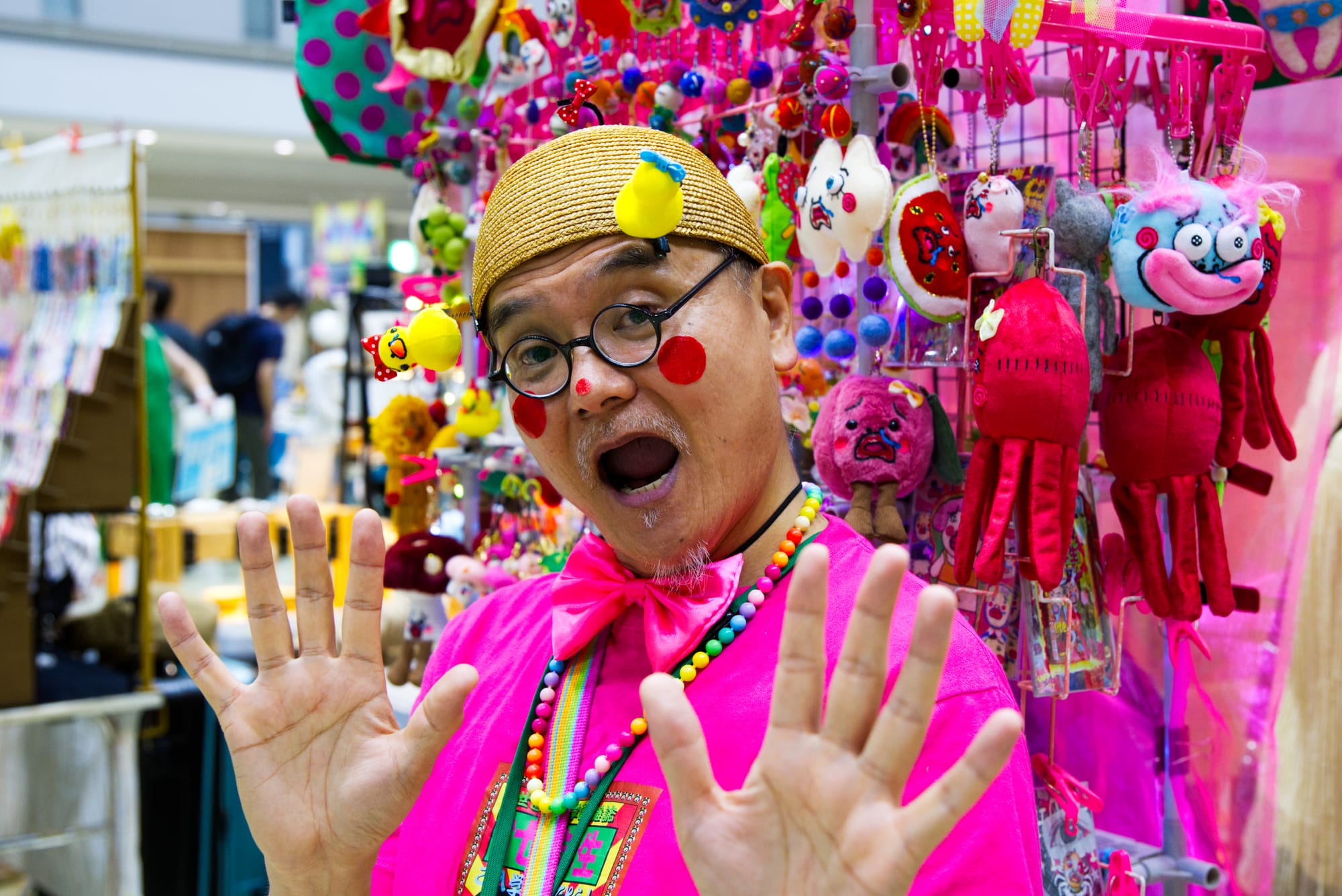
It was in the free-range area that I met Happy Yonaoshi, an energetic older man attending the show with his partner dedicated to joyful craft work. What does that mean? Anything, really. Bouncing tubes with faces? Check! Check! Crochet strawberries with silly faces? I bought one of those, so certainly. We spoke in the earlier moments of the show, and he spoke about his joy merely to make people smile with the things he created. I certainly laughed along with a childlike wonder at these creations, so it certainly achieved that.
At times, I found it impossible not to linger and stare as I wandered the live-painting areas. Here, in a more open space, large canvases have been erected for artists to use as they please, many spending the entire two days slowly but surely painting a unique piece of art in their style on a wall-sized mural for all to see. With a crowd and a need to balance their work with the small stands many would host in front to sell their art, the space allowed them to paint on a canvas far larger than they may usually work upon, and the results are stunning.
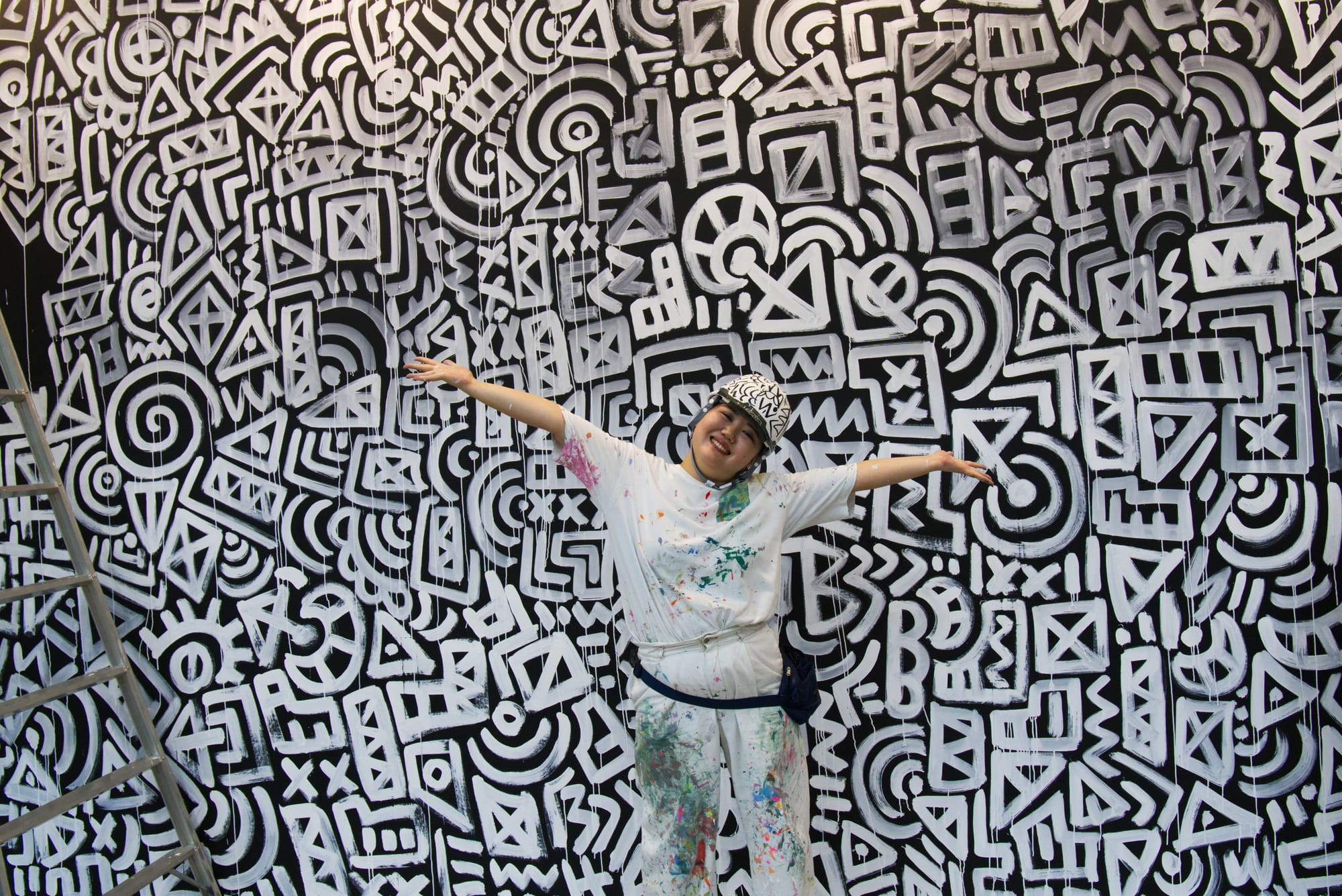
MIINA, whose self-admitted ‘childish graffiti’ style of art had an almost-endless appeal where it was unclear where any line started or ended, sucked me into their tapestry of dripping lines. Okusaki Naomi possesses a unique 1990s anime-inspired style that distinctly their own which she brought to life on the grand canvas using markers.
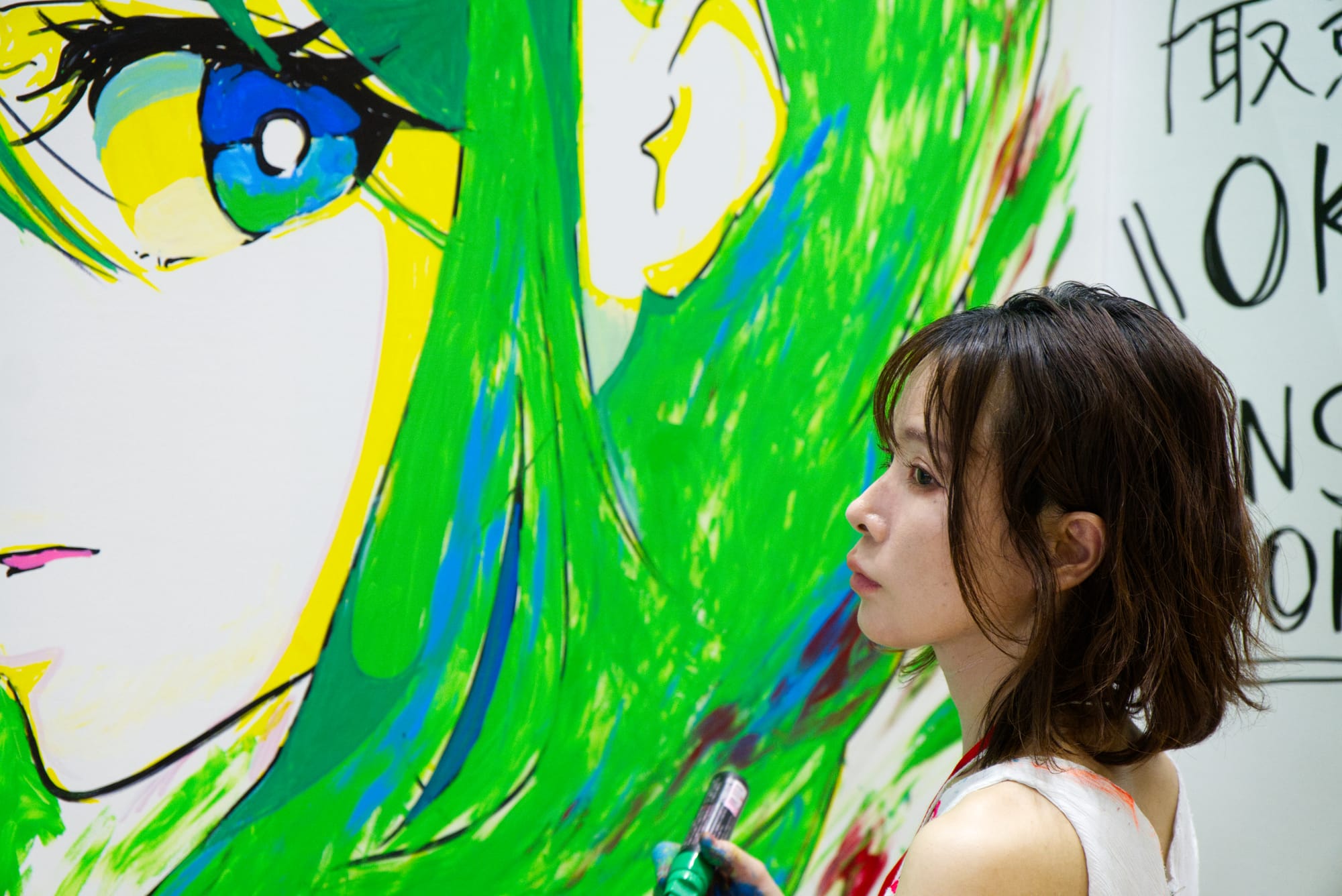
It’s an event celebrating what humans can achieve, in a manner that feels heartfelt and genuine in a way that ensures that link to the grassroots remains. This is present in the Design Festa Gallery, a space that went from the initial home for the event to their permanent gallery. Anyone can rent a small space in the building to showcase their work, after which artists can sell or showcase their work while retaining 100% of profits, rather than the gallery taking a cut like in some other spaces. This rent, and the attached cafe, ensure the building remains sustainable even outside of the periods for the main event, but it’s another way the event remains in tune with the reason it was initially founded, even as it expands to have space internationally in Paris.
One thing that is unavoidable, however, is the passage of time. That underground initial event was a success through word of mouth and flyers, analogue methods growing obsolete in a digital world. Design Festa was founded as an event to discover new artists, but in a digital world people increasingly discover and share new artists on social media. Especially in the last 10 years, the ways for new artists to be discovered has changed dramatically, and in some ways this has been transformative. Indie artists are more easily able to sustain themselves, and even major corporations are seeking out these creatives for direct collaboration at levels unseen before.
But where does that leave Design Festa? What purpose does the event hold in such an environment? Now, it’s a hub for those fans to meet and connect with artists directly. It’s an event for community to gather, it’s a celebration of creativity, and in that process of seeing the familiar that might get you in the door in the way unseen sights would’ve once been a draw, maybe you can still discover something new in the process.
“While we haven’t changed our stance to the event, recently we’ve had more students and the likes inspired to work hard on their art and showcase at Design Festa,” noted of the shifts in the online world, noting how people like this were inspired to create by art they saw online. “At both the Design Festa Gallery and the event itself, we’ve always had a lot of domestic artists but we’ve had more international creatives seeking to participate in the event as well, including from places like Korea and Taiwan. You have people who may be introduced to an artist online and come to the event to see their work and find new people in the process too!”
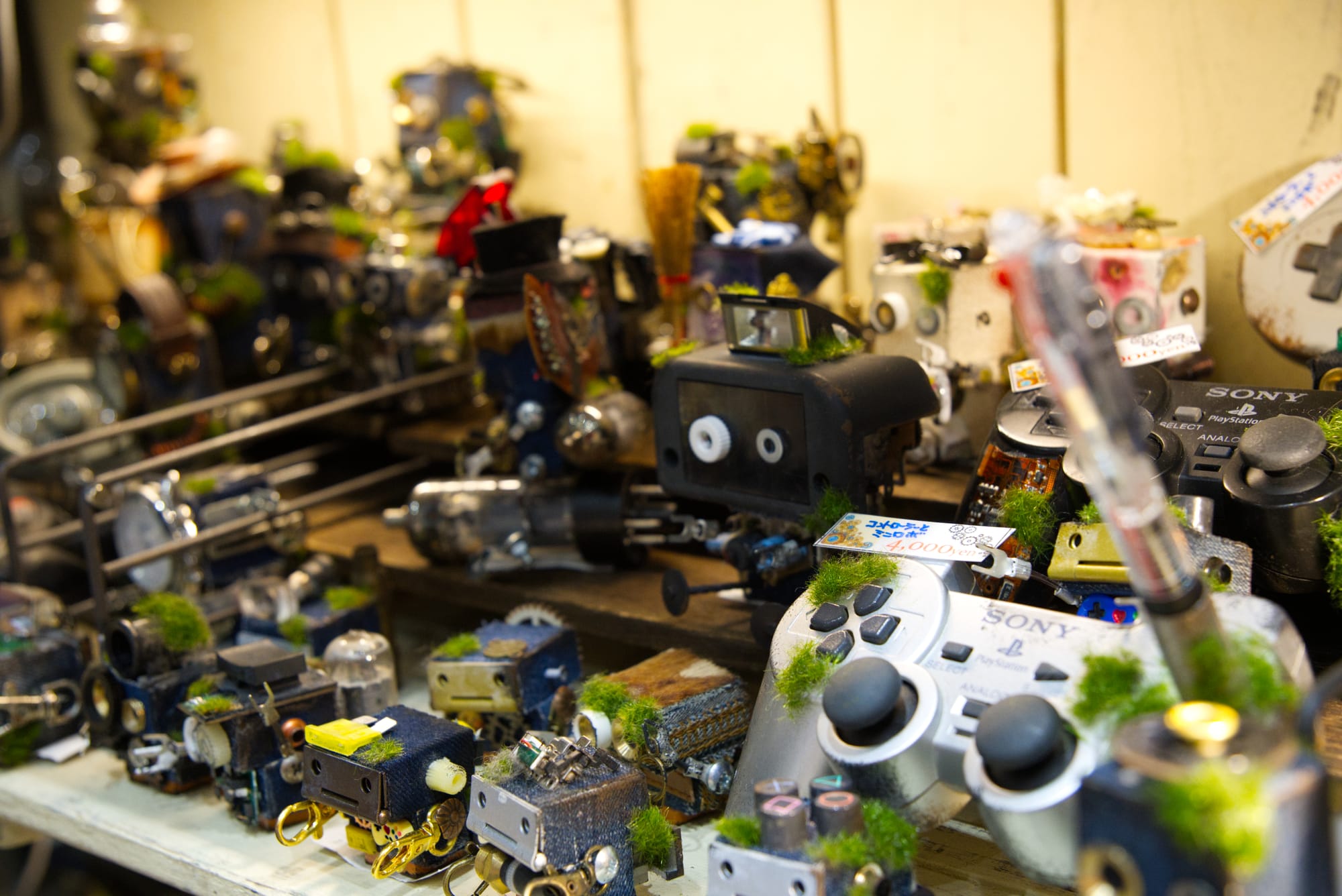
That includes for tourists! As foreigners have increasingly come to Japan, more wish to directly meet and buy from artists, but the barriers to learning about and attending these events remain high. In attempting to grow the event more, one challenge is introducing broader global audiences to the event while ensuring that they respect the norms of such events (an increasing point of contention, considering the growing number of signs warning about e-commerce and video calls on show halls).
But this is a more global event than ever in terms of attendees and participants alike, and through Instagram and other channels they’re also seeking to welcome and allow a more global audience a chance to not only take part but embrace the unique aspects of the creative scene and support artists of all sizes.
Design Festa is a heartfelt celebration of artists in the heart of Tokyo, and something worth seeing. The chance of finding a new artist, a cool piece of jewelry, delicious freshly-baked goods, a cool steampunk post-apocalyptic-inspired robot concept model created out of old technology, is high, and there’s a thrill to finding something you can fall in love with like that. There’s few events as broad and fun to simply immerse within as this, especially if you love art, and isn’t that worth something?
